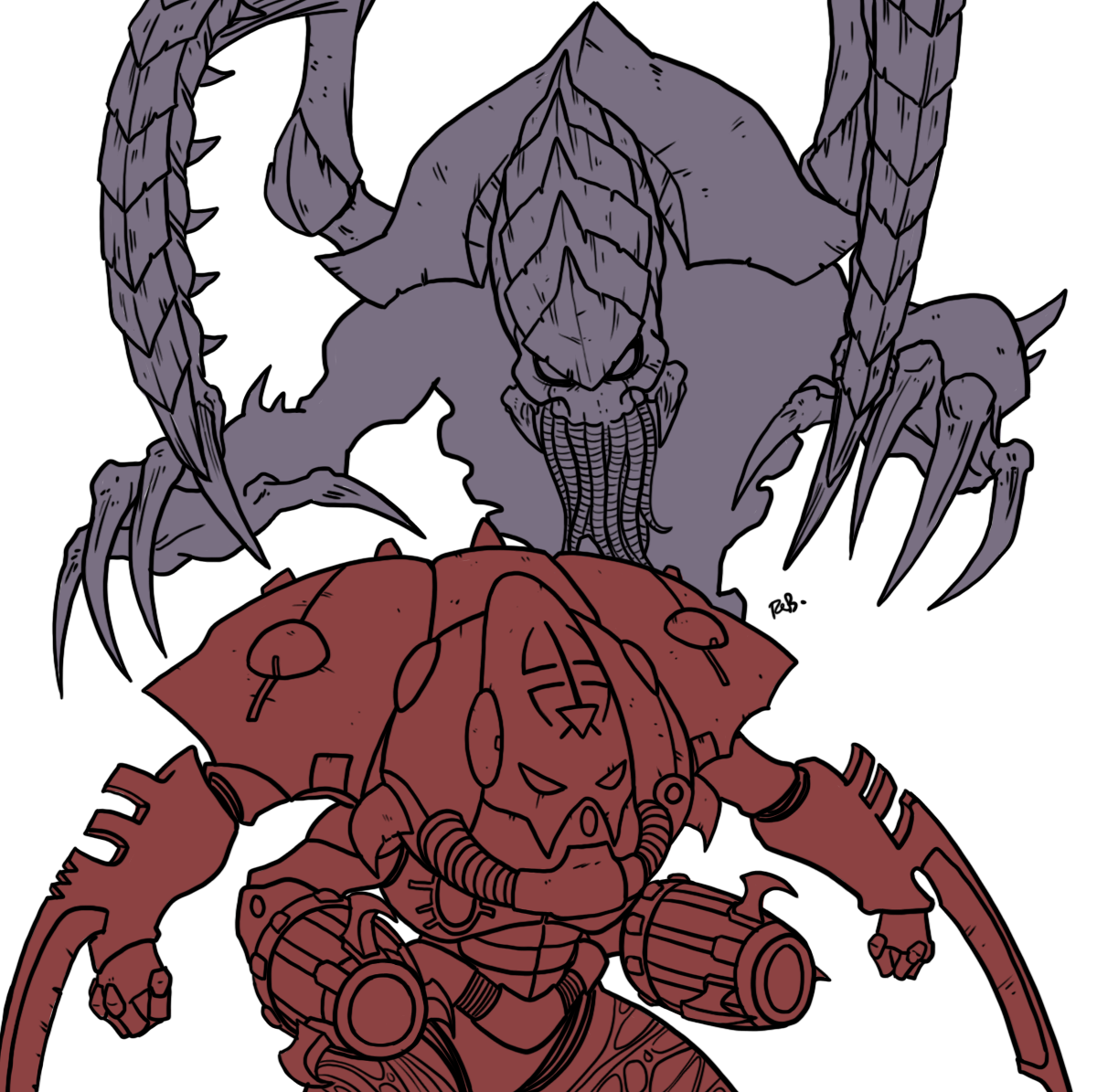This article is part of our series looking at Unit Roles in 9th Edition. If you’ve just arrived, you might want to go check out the Introduction, which talks through what this series is about and how it’s going to work. Otherwise, read on.
Units in 9th Edition can usually be grouped into one of six roles, four “Primary” Roles and two “Secondary” Roles. The Primary Roles are crucial building blocks from which effective strategies are constructed, while units from Secondary Roles can either amplify the capabilities of other units or broaden the scoring options available to a list.
The roles are:
- Primary Roles:
- Secondary Roles:
- Objective Utility
- Force Multiplier
We will be running five articles that will be diving in to one or more roles, one each for the Primary Roles, then a joint piece for the Secondary Roles at the end. For each role, we’ll talk about what it is and how it’s used, some examples of standout units from it and how to play against it in the table. For each Primary Role, we’ll also take a look at a competitive army list that uses that role as the foundation of its strategy.
This is the last of those five articles, taking a look at the Secondary Roles.
Why are they Secondary?
A question I’ve seen in some of the feedback to this series is why I’ve drawn the distinction between Primary and Secondary roles, and before we look at the two roles themselves, I thought I’d dig into that a bit.
The key difference for me is that the Primary roles are things that you can build the core of your game plan around, whereas the Secondary roles can substantially strengthen a list and plan, but need Primary elements in place to provide a foundation that they build on.
That doesn’t mean I’m saying either of the following:
- Secondary Roles cannot be integral to game plans.
- All Primary Roles are mandatory in a list, while Secondary Roles are optional.
On the first point, both Objective Utility units and Force Multipliers can be integral to gameplans. An army that has a bullet proof plan from its Primary Role units for how to score the Primary objective and two out of three secondaries can nevertheless be non-viable if it is reliably giving up any shot at the last Secondary. Adding some Objective Utility units to enable either Scramblers or Engage can turn such a list into a valid tournament build. Meanwhile, some Force Multipliers essentially “switch on” the ability for other units to play a given role, making them a vital when you include a unit expecting them to perform that job. An example of this is the Craftworlds Guardian Defender Bomb – without a Farseer casting Guide and Doom these don’t really do enough damage to play any role effectively, but add in full hit and wound re-rolls and suddenly they’re an Elimination threat. When your Primary units need their support, Force Multipliers are every bit as vital to your list as the untis themselves.
For the second, not all lists need to feature all four Primary Roles, and I hope some of the examples chosen illustrate that. On sheer numbers, I strongly suspect you see more points spent on Force Multiplier units across all armies than Attrition units, and see a higher number of lists feature some Objective Utility units than all four of the Primary Roles. The difference isn’t in what’s mandatory, it’s in how they build a plan for you. If you don’t have a coherent strategy from your army built around units performing the Primary Roles, you probably need to sort out your allocation of Primary Role units first, rather than tinkering with Secondary Roles (unless your problem is very specifically “my scorecard says 15/15/0 on Secondary objectives every game”).
In addition, for both the Secondary Roles, going too far in spending points on them is likely to give you an army that just loses to everything – your game plan will either end up not proactive enough or as too much of a house of cards that a savvy opponent can either kick the bottom out of or just ignore as they get on with their plan. The same isn’t as true for Primary Roles – while good lists will generally combine several of them into a flexible killing machine, a list that goes completely all-in on one of them will generally have some opponents it just completely crushes, because the components it’s using are fundamentally good at doing their job when not effectively countered.
In summary – don’t take Secondary to mean that these are necessarily less powerful, useful or even vital, but do make sure that when you’re mapping out your strategy or tinkering with an underperforming list that you ensure you have a coherent Primary Role plan first.
Secondary Role – Objective Utility
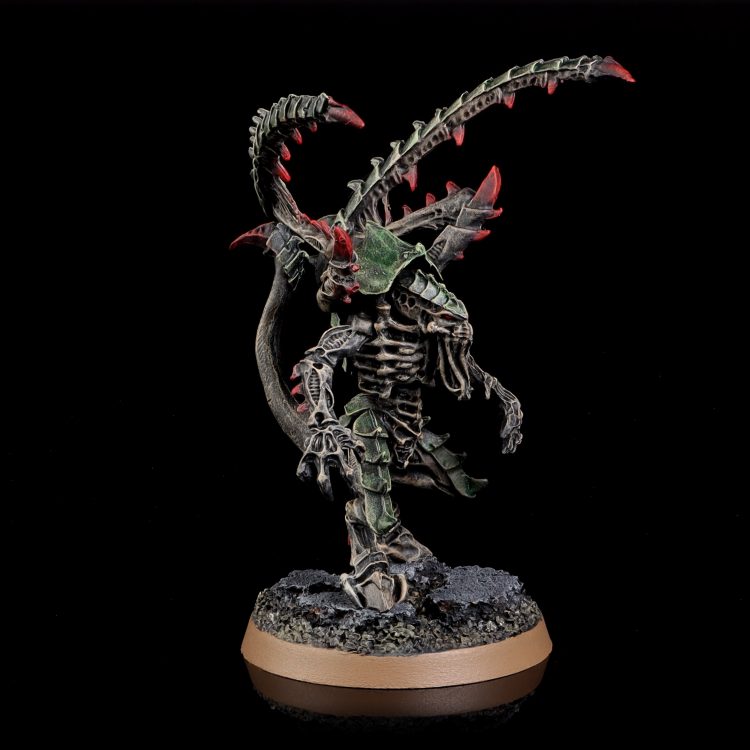
Credit: Pendulin
What They Were in 8th
Harassment, Screening, Backfield
What They Are
Action based Secondaries, and in particular Deploy Scramblers as a ubiquitous fallback Secondary, have made Action Utility units a very important part of listbuilding in 9th. For any army that can squeeze them in, there’s huge value to packing at least a couple of units that are:
- Infantry
- Non-CHARACTER
- Are either fast or can deep strike, or at a pinch are small and cheap to put into Strategic Reserves.
Having these in your army makes it significantly safer to pick Deploy Scramblers, and can be extremely helpful for securing Engage on All Fronts and some faction secondaries as well. When you don’t need them to do that in a given game, they can fall back on some activities that are a bit more familiar to how you saw some of these units used in 8th – holding home objectives, zoning out enemy deep strikers and, if they’ve got ObSec, coming in and making an attempt to charge and temporarily flip objectives. However, plenty of the units used in this role simply wouldn’t have been taken in 8th, as giving up an easy kill was actively bad for scoring, which kept incredibly fragile units off tables. Now, there’s some argument that the smaller and cheaper the unit you can have this capability attached to the better, and a whole bunch of units have received a new lease of life as a result. That doesn’t mean investing in something a bit pricier is always wrong mind – options like Seraphim will set you back a few more points, but via equipping with special weapons can provide the flexibility to threaten some damage to either a tank or enemy hordes, making them much more valuable in games where you don’t need to Scramblers.
The other notable thing these units help with, post the January FAQ, is final turn scoring as the second player. These units tend to be pretty small and easy to hide, so can be held in safety behind terrain ready to dash out and flip objectives in the final turn. That gives these a more robust plan B in almost any list, meaning that the opportunity cost of taking them when Scramblers is a sometimes treat for you is a bit lower.
In terms of how you incorporate these into your armies, my general stance on these is that if you aren’t confident you have a consistent three secondary plan that will never need Scramblers, and you don’t already have stuff that can pull it off, you should be willing to dedicate up to 100pts towards buying units dedicated to this role. If the units you’re buying can be more flexible (such as the Seraphim example above) or are very good at contributing to Primary objective play (e.g. Deathskullz Kommandos and Stormboys) feel free to spend a bit more, but if they’re just dedicated Scramblers units, probably don’t throw too many more points than that after them.
Examples
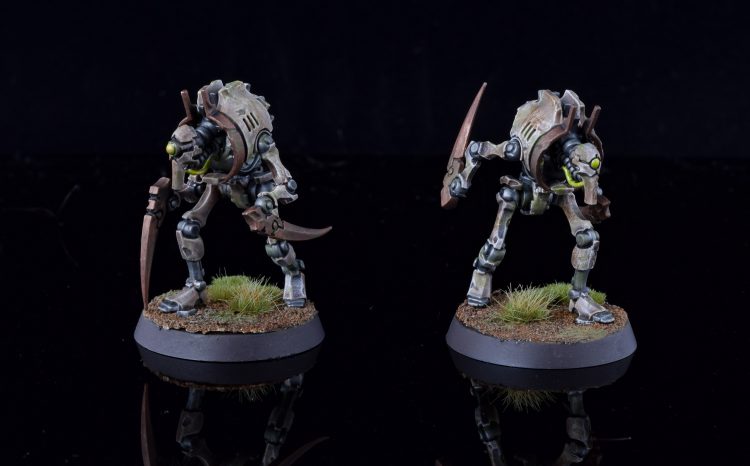
- Lictors: Probably the single best example of this, and a great demo of how things have flipped from 8th because these were trash garbage. Cheap, single model, natural deep strike, Scramblers for days.
- Cryptothralls: The trashcan velociraptors that could. Necrons are desperately short of really cheap INFANTRY squads so these are a gift, and being able to take them without detachment slots and their surprising durability is just gravy.
- Kommandos: Dirt cheap deep striking INFANTRY, with a couple of handy extra angles – if you pay for a Nob with a Power Klaw they can actually bully small enemy units, while as Deathskullz they’re ObSec, so can do some sneaky objective flipping.
- Warp Spiders: Via the Web of Deceit Exarch Power these can redeploy once per game, which makes them handy for this – they can Scramble in your deployment zone turn one, then hide behind a ruin till a space opens up to teleport into your opponent’s zone.
Further options (if you’re racking your brain as to what to take here) include:
- Company Veterans
- Victrix Guard
- Death Cult Assassins
- Stormboyz
- Striking Scorpions
- Drukhari Court of the Archon models
- Bare bones Acolyte Hybrids
- Tempestus Scions
- Chaos Cultists (Tide of Traitors flips them towards being pretty good at this)
- Flayed Ones
- Furies
- Prosecutors
- Stealth Suits
How to Respond
This is another area where you have to approach the situation with some realism, and ask up front “am I actually going to manage to stop them Scrambling”? Sometimes the answer is yes – Deep Strikers can only be held till turn three, and if the opponent is using Stratagic Reserves to line these up then turn 3 is the only time they can pop straight into your deployment zone, and the places they can arrive can be fairly limited. If you think you can do it without compromising your game plan, or think the score margin is likely to be small and denying Scramblers might make the difference, then go for it. 9th heavily incentivises you to go out and fight for the table, however, so make sure you aren’t having to hold too many units back and throwing good points after bad to do so.
Force Multipliers
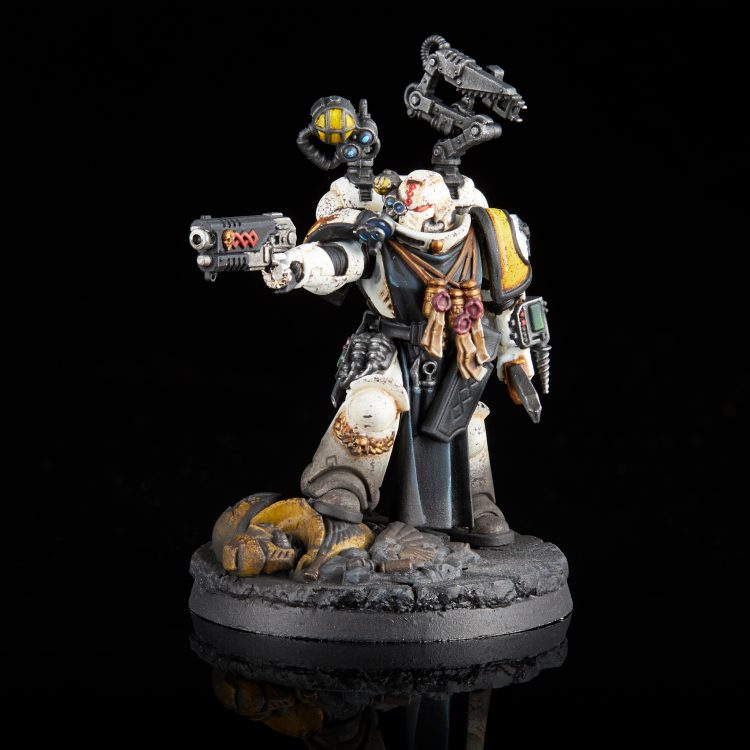
What They Were in 8th
Force Multipliers, Slot Fillers
What They Are
Force multipliers aren’t included in your list to fulfil a primary role themselves, instead helping other units perform theirs more effectively via granting re-rolls or other kinds of offensive/defensive buffs. Some can also perform other roles as well (plenty of Marine characters can help Brawl), but the primary reason you put them in your list is to ampllify other units.
That hives them off into their own special category, because they aren’t a vital building block in battle plans that you must include, rather something you’ll pick if your faction has access to good ones, and picking them does one or more of the following:
- Increases the effectiveness of your other units by a greater magnitude than spending points on more units would.
- Allows you to augment your capabilities in other roles more flexibly than buying a split of units in those roles would.
- Lets you flexibly sabotage your enemy’s units in a way to allow yours to overperform.
- Does at least an OK job at improving your capabilities and fills a mandatory HQ slot.
In the first category, one of the big stories of 9th has been the extent to which defensive and positional Force Multipliers have come to the fore. The power level on newer ones (see Psychic Fortress, Chief Apothecary, Rites of War) has generally been a lot higher than we saw in 8th, and the increased importance of fighting for the board for a whole game has made these very popular in factions that have them, with Marines, Sisters and Harlequins being notable.
Offensive Force Multipliers were a huge deal in 8th, and while some of the most egregious ones have been dialed back in 9th, they’re still strong – adding re-roll 1s still gives you a nice, flat 17% increase in damage output, and even the “fixed” version of Chapter Master is a big deal. That also shows off the second category above – if you’re packing a list that contains both Elimination and Brawler units (and as Marines, you probably are), then the Chapter Master buff can flexibly improve your capabilities in either as needs dictate. Maybe it won’t add as much damage as another ~140pts of unit would have done, but being 100pts of Elimination on turn 1 and 100pts of Brawler on turn 2 is still better when you take a long view.
The final “proactive” category here is something that’s mostly new for 9th – we’re seeing units like the Psychomancer and abilities like the revised Interromancy added that much more directly reach out and shut off opposing abilities, notably by applying Fight Last, switching off auras or disabling ObSec. While it may seem strange to group these as Force Multipliers given they’re hindering your opponent rather than helping you, the net result is it still lets your units do something they couldn’t otherwise, whether it be using their own ObSec to steal a position, tank more attacks after the opponent loses re-rolls, or allowing you to do a multi-unit pile on against a dangerous melee threat that would otherwise interrupt and body you. That last category is also the one where there’s the most “active” decision making about list inclusion, because you can approach a list thinking “I’m struggling to deal with Brawlers“, and decide one of those debuffers is the best way to improve your matchups.
For more conventional force multipliers you’re going to be lead by the choices available to you. First up, the advantage they provide has to be something you actively want, and you need to be confident it will provide enduring and meaningful value. It can be tempting to pack a pile of these aimed at turning one of your units into a turbo-charged killing machine, but if that unit dies, are these still providing value elsewhere in your army, or does your opponent essentially shut them down at the same time by deleting your alpha unit? On top of that, consider whether that unit actually needs the help in order to do its role effectively (or provide it with the flexibility to assume other roles in some cases). Plenty of units are more than nasty enough on their own merits, and it’s also worth going through your stratagem sheet to see if there’s a way they can pick up whatever buff you’re looking for “on demand” rather than having to lock in paying for a Force Multiplier up front.
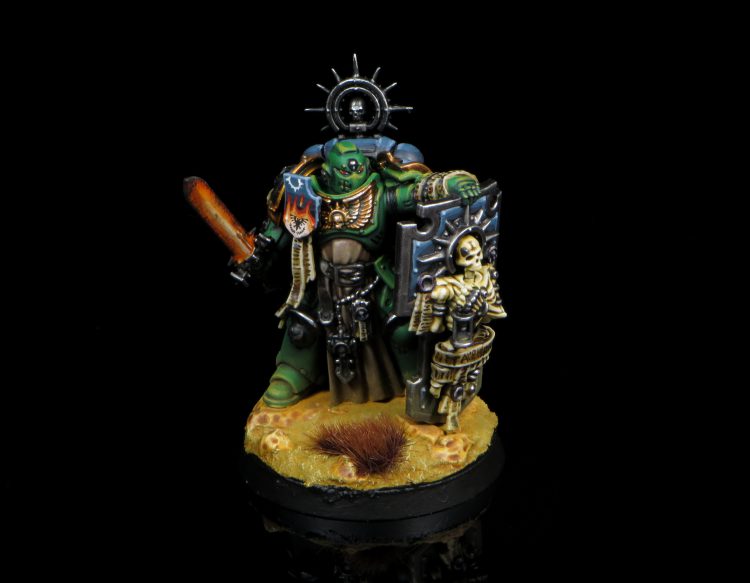
This can be made easier if the Force Multiplier is strong at performing another role, and significant proportions of them can. Pretty much all Marine characters can do some amount of damage in melee, and while they can’t Brawl in the early game when enemy shooting would pop them trivially, once things descend into a messy punch up around terrain and the opponent’s best Elimination threats have been removed, they can switch to this role. Alternatively, some specifically built options like Smash Captains and Chaplains can deal the kind of damage of Elimination units when they get a charge off, and can wait in your lines providing Force Multiplication until they’re ready to pull that off. In general, the fact that their Force Multipliers tend to have strong role flexibility in the mid and late game is one of Space Marines’ big strengths.
The more of that flexibility you’re getting the more you’re generally willing to spend on these, but even when these have a strong backup plan they generally need protection at least in the early game, and as a rule of thumb I start looking very carefully at whether I should be adding any more of these once I’ve hit a quarter of my points spent on them. That doesn’t mean I’ll never spend more, and the units having strong backup roles generally makes that more palatable, but bringing too many is a temptation that sometimes needs to be resisted.
Examples
- Sorcerors: The vast majority of non-MONSTER Psykers sit somewhere on a sliding scale between Force Multipliers and Attrition units, and with Prescience, Warptime and Death Hex being the real standout powers, Chaos Space Marine Sorcerors sit firmly at the Force Multiplication end of the spectrum.
- Chief Apothecary: One of the absolute all-stars of the edition, between making all your Marines tougher (especially against multi-damage weapons) and rebuilding whichever squad you need the most with Combat Revival, this guy (or his mobile Dark Angels/Blood Angels special versions) is a perfect example of this role.
- Triumph of St. Katherine: An all-round all-spectrum Force Multiplier machine, letting you punch above your weight in a whole range of phases and situations.
- The Swarmlord: An example of a very high flexibility choice, they’re clearly a Brawler as well, but the reason they get into lists is the ability to double move your other units, ensuring they’re in position to perform their roles straight away.
How to Respond
Force multiplication is often tied to CHARACTERs, so often enough you won’t really have the ability to reach out and remove them directly. Instead, you need to work out how to plan around them. For offensive Force Multipliers, this can mean taking out the units that they’re great at buffing, as that will neutralise the positive impact the FM has at the same time. For defensive ones you instead need to adapt your allocation of attacks to make sure you’re still going to achieve goals you’ve set yourself, and for some kinds in particular (e.g. Combat Revival) prioritise taking out whole units. Can’t revive a Plasmaceptor if the unit is dead *taps head*.
For the rest – make sure you understand how they can change the dynamics of the situation, and make sure your mental calculus of which units you can throw into battle on which fronts doesn’t need updating. A lot of potential “gotcha” moments come out of this role, and you don’t want to be caught high and dry because your prized Brawler unit runs face-first into a Fight Last.
Wrap Up
That’s it for the roles themselves – join us later in the week as we put this theory into practice by analysing some army lists and how to use the concept of roles to tune them. Any comments, questions and suggestions to contact@goonhammer.com.
